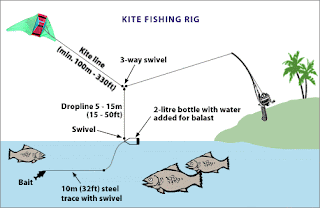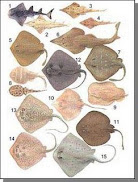Infinite Dreams Hooked on Creatures of the Deep v0.74 N-GAGE SymbianOS9.1 Cracked-BiNPDA
Lost sense will bored let ' us play this game,
THIS GAME FOR HANDPHONE NOKIA N81,N81 8GB,N82,N95,N95 8GB.


First Download and Install the N-Gage Application at
ngage appand install at your phone.
After install ngage application then install this games follow the instructions.
Game DownloadGames Instruction


Hooked On: Creatures Of The Deep is one of Nokia's flagship first party games, and one of the most eagerly awaited titles of the new N-Gage platform's launch. It's been published by Nokia itself, and the developers are the Polish company Infinite Dreams, who are well-known in the smartphone community for their acclaimed high-quality games such as K-Rally, Sky Force and Super Miners (all of which are available for N-Gage phones, just look for the versions labelled "Symbian S60 3rd Edition").
HO:COTD is a sort of combination of a fishing simulator and a role playing game, with every successful catch earning you experience points (XP) that bring you closer to "levelling up", which unlocks new features, playing areas, items and even mini-games. You can just fish at random if you want, or you can choose to take part in a quest (usually to find a particular object lost underwater, or to catch a certain creature), or you can take part in tournaments which are held several times a day in the game world (they're offline tournaments against computer players, so you don't need an internet connection). All three activities can be done at once, so for example if you get bored of a quest you can go off to join a tournament.
The game takes place in four real-life fishing resorts in Costa Rica, Alaska, Scotland and Thailand. Some of the characters you meet exist in real life, and the resorts themselves are represented by locations in the game based on real maps. You start the game in Costa Rica but as you earn experience you'll unlock the other locations, and you can fly to them from each resort's airport. As you level up, new fishing tackle will be available to you from the resort shop (you don't have to pay for it, just reach the right level of experience and go and collect it).

The controls for the game are very, very simple: you move with the direction pad, and you select things with either the direction pad button or the top gaming button (the A button). You also occasionally have to choose an option with the blue soft keys. The simplicity of the controls means you can play the game just as easily with one hand as two, and the game plays just as well in horizontal/landscape mode as it does in vertical/portrait mode. HO:COTD is suited to practically any phone model with any button layout.
You choose where to fish from a detailed 2D map which you drive your boat around. The map is animated, so for example you can see where other boats are fishing (if there are any), and the depth of the water is visible from the colours of the sea or lake. Once you decide on a place to fish, you just click the button and you're presented with a 3D view of the spot where you can look all round and up and down.

Using a golf style power meter, you press the button to cast your line, and then press it again to choose how far out you want the line to go. If you've managed to obtain a depth meter, you'll see a chart showing how deeply your lure has sunk, which is important as different lures sink at different speeds, and different fish live at different depths. Reeling the lure in keeps it at that depth, though it may drag it away from an interested fish. When a fish does try to take the bait, the game's camera zooms in on the end of your reel, and if the fish is ready to be reeled in a blue icon will appear telling you to press the game button.
This is where the excitement begins: you have to get the fish all the way back to the boat, with that distance represented by a blue bar. At the same time, the fish has to get away from you, so it tries to pull on the line as hard as it can, and the strain on your line is represented by a green and red bar next to the blue bar. If you don't reel the fish in it will get away, but if you do reel the fish in it will cause strain on the line. Your task is to balance the strain with the reeling, and this is where the essence of the game lies, in "playing chicken" with the strain gauge so that it goes as close to breaking point without actually breaking. This is made very difficult by the constant changes in direction of the fish, and you see it spinning you around in the main display, occasionally even jumping out of the water in a rather spectacular manner.
If the above process sounds complicated, it isn't, you get to know the game very quickly and fishing becomes an instinctive process. Catching a fish feels very much like a duel, which is probably as it should be.
If you manage to get a fish reeled all the way in, you receive experience points based on how rare the fish is and how difficult it is to catch. You can then either keep the fish or release it (the game generally rewards you for releasing fish, especially rare species).

Sometimes you'll find a fish is very easy to reel in, and then you'll discover it isn't a fish at all but an object of some kind. It's worth keeping all the man-made objects you find, as you receive bonus experience points for removing rubbish from the water, and the objects may help you solve certain quests. Particularly interesting are the messages in bottles that you catch from time to time, which reveal the back-story to the location you're in at the moment. For example the Costa Rica resort has lots of ancient maps and messages from Christopher Columbus.
You'll also very occasionally catch a creature that isn't a fish, such as a turtle, crocodile or even (if you're lucky) the Loch Ness Monster.
N-Gage Arena
As far as we can tell, the only Arena features on here are online scoreboards, and various in-game actions also earn you N-Gage achievement points for your N-Gage profile.
Overall
Hooked On: Creatures Of The Deep is great fun to play once you've worked out where all the options and status screens are, and it gets even better once you've unlocked things like the depth meter, extra tackle, and the other resort locations. People who invest time in this game will be rewarded.
Unfortunately the game's designers haven't made it very easy to do the things above. The "Pause" menu is far more important than its name suggests, and the "Pocket" menu also needs to be much more prominent so people can easily find some extremely vital things like the tackle box. There really ought to be a tutorial at the beginning of the game taking the player through finding all these features, because progress will get very very difficult without them. Infinite Dreams know how to do tutorials, they have an excellent one at the beginning of Games, so it's a shame they didn't make one for this game too.

Another problem is that the amount of experience required to unlock certain parts of the game is far too high. The main reason this reviewer has taken so long to write this review is because it took about two or three days of long playing sessions to unlock the first extra resort. Considering the average phone gamer is only likely to be playing this on their way to and from work, it may take them weeks to unlock even one extra resort, by which time they could well have become bored as progress seems so slow. It also seems odd to lock these resorts at all, as the player starts on level 1 in all of them and progresses in each resort completely separately.
It's also a shame that N-Gage Arena hasn't been used for more than just scoreboards, and some features touted last year (such as putting your own message in a bottle for other Arena members to read) seem to have been dropped.
This is a frustrating situation because all the ingredients are here for one of our ultra-rare "Mega Game" awards, but unfortunately HO:COTD doesn't quite make it.
However, this is still one of the best phone games out there, it has great gameplay which suits long and short playing sessions, it has wonderful graphics, it has depth and longevity, the controls are simple and intuitive, and it brings a new kind of game to phones too. At 10 euros this is really good value for money, there's so much to discover in HO:COTD that it will keep you going for a long, long time.
We feel very happy to give Hooked On: Creatures Of The Deep our first "Recommended" award for a next gen game, and hope that Nokia will get Infinite Dreams to do lots more N-gage games. If they're this good on their first attempt, they definitely deserve a long term contract.
Game Download






























































